When the windchills have our house dogs hiding under blankets and refusing to go outside, it’s easy to wonder if the sled dogs of the John Beargrease Sled Dog Marathon wouldn’t rather be doing something else when it’s -30.
You can explain that the dogs are bred for these conditions and bore people with the ins and outs of double coats. But Dr. Greg Phillips, longtime head veterinarian for the race and former musher, says everything you need to know can be seen at the starting line and the finish line by just looking at the dogs themselves.
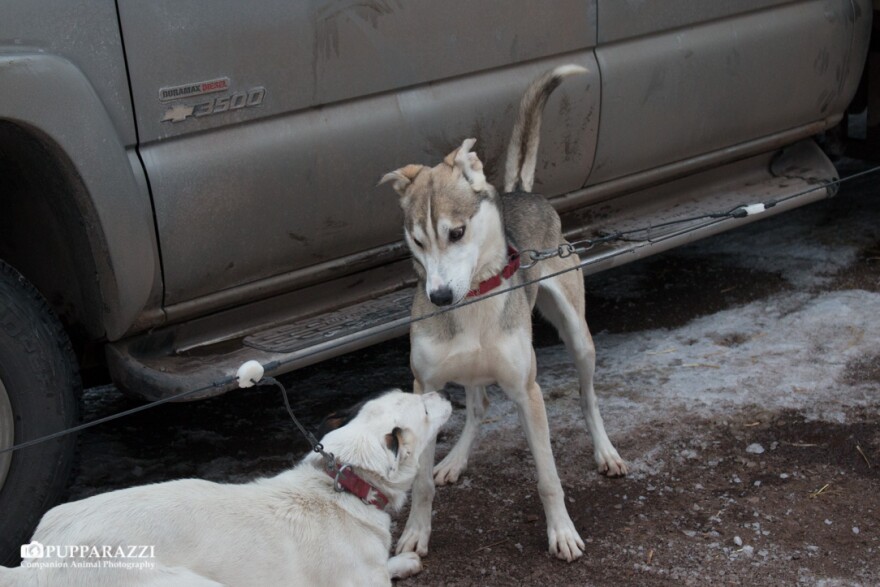
But sled dog racing doesn’t rely on reading a dog’s body language. Phillips says at the John Beargrease SledDog Marathon, there’s one set of numbers that tells the whole story: 12 veterinarians, seven vet techs and one EMT. In other words, there are 19 medical professionals charged with looking after the health and welfare of the dogs and only one to take care of the mushers!
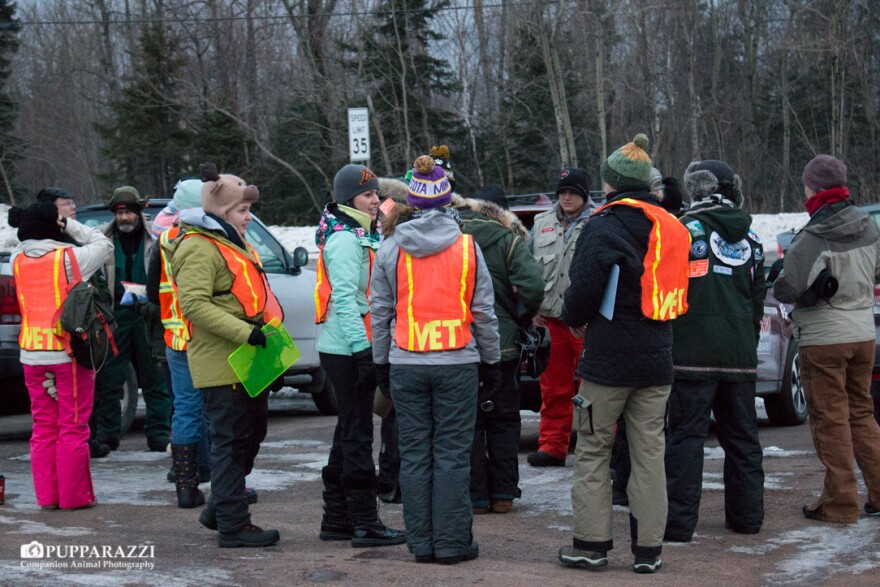
Sled dogs certainly get more vet exams than our house dogs do - especially when they’re competing. Three complete checkups: before the race, at the midpoint, and at the finish line, plus they’re looked over at every checkpoint as them come in. Three complete vet checks times 12 dogs? 36 vet visits in two or three days? All of a sudden the yearly trip to the vet for shots and heartworm medication doesn’t seem so bad!
The first mandatory check-up is the day before the race begins. After the musher has presented the vaccination records for their team, pre-race checks typically start with an examination of the dog’s overall condition. Vets listen to the dog’s heart for murmurs or arrhythmias, check to make sure their lungs sound clear, their gums are healthy and pink and the dog is well hydrated.
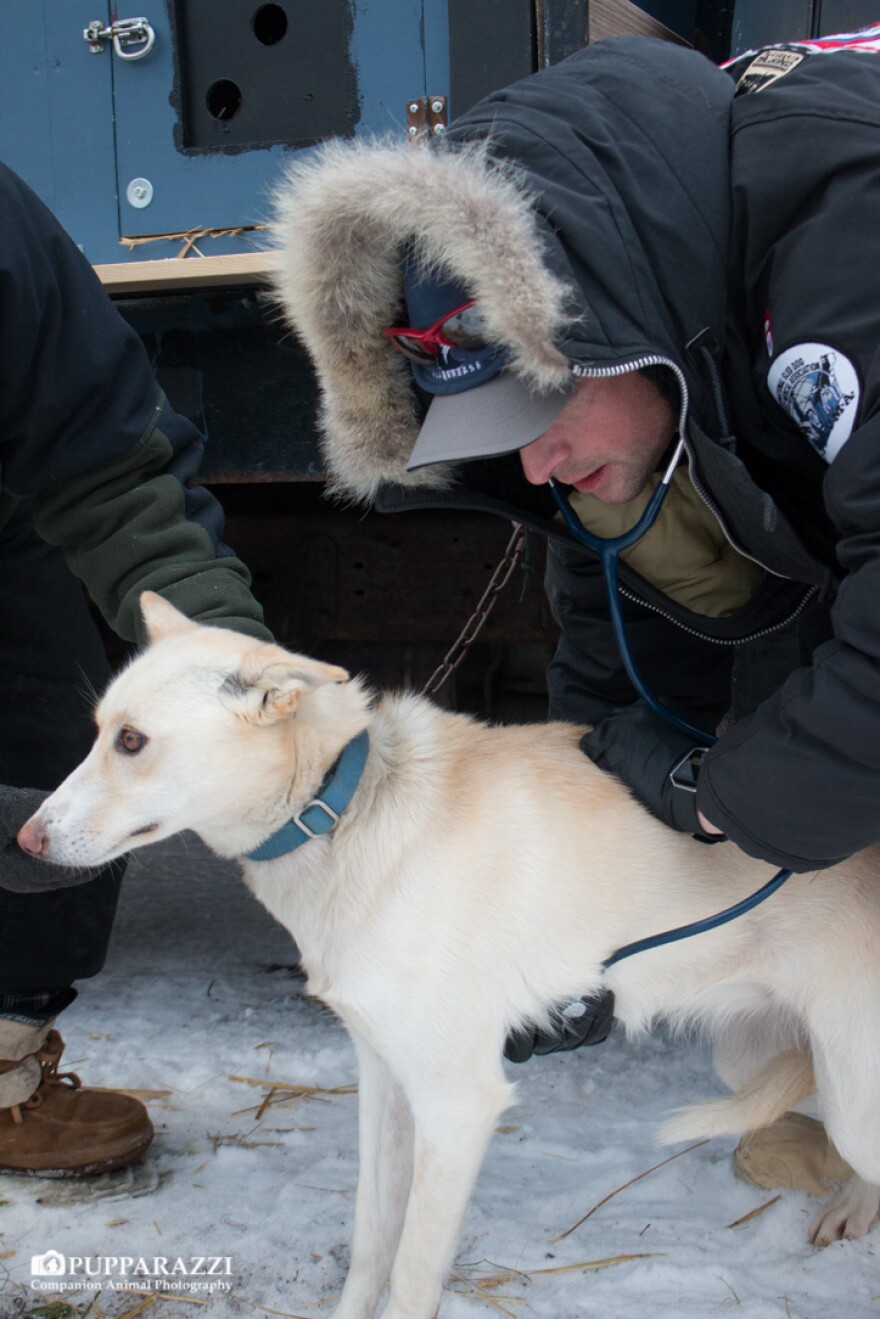
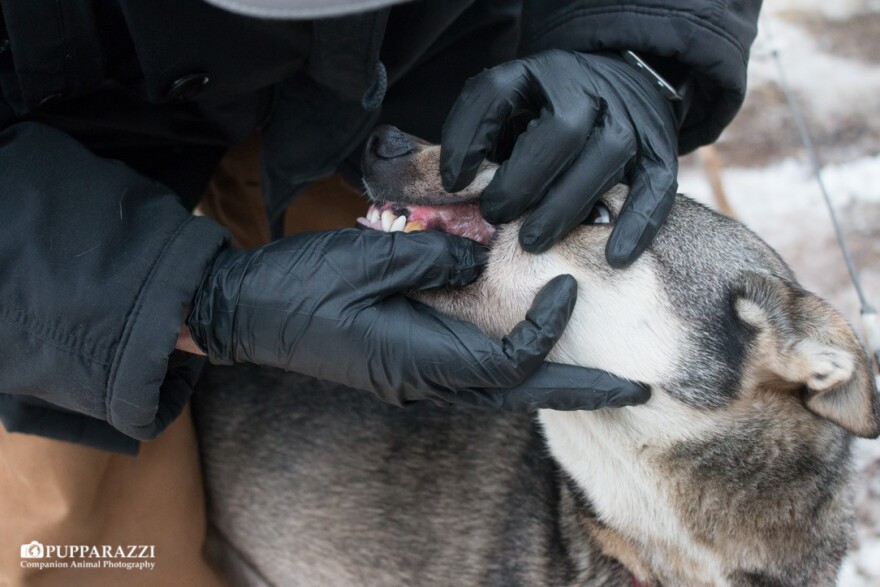
Then it’s on to an examination of their coat, checking to make sure it’s in good condition without any signs of rubbing from the harness.
Obviously, keeping a sled dog’s feet in good condition is paramount. If the dogs are running on rough ice, mushers may use booties to protect the team’s paws. On smoother ice though, taking off the booties allows the dogs to get better traction with their claws. The design of dog booties continues to evolve and improve, but mushers still rely on their own experience and their knowledge of their dogs. You may also see them putting various kinds of protective balm on their dogs’ feet to help protect the pads from sharp ice and gravel. And speaking of feet, how come sled dogs don’t get the huge ice balls we’re always picking out of our golden retriever’s paws? Booties and balm surely help, but it usually comes down to mushers knowing enough to trim the hair short between a dog’s pads!
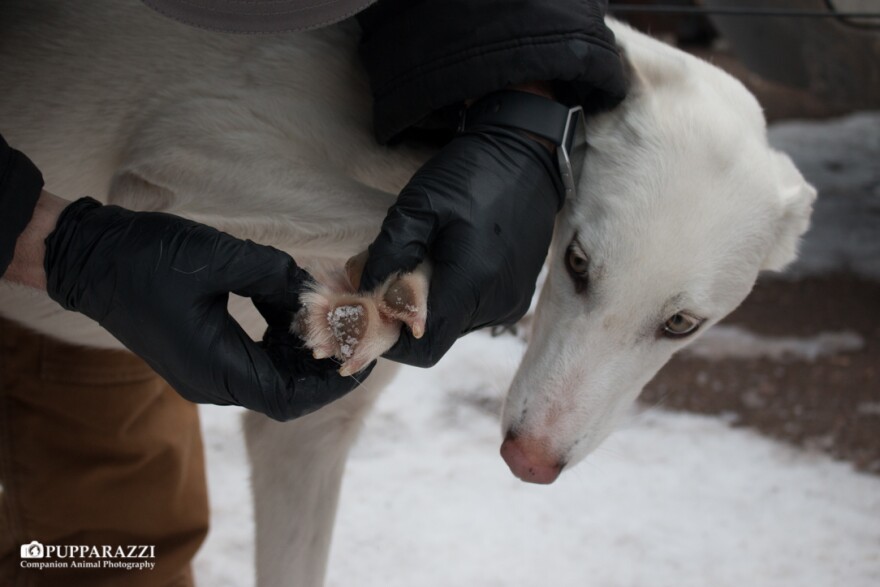
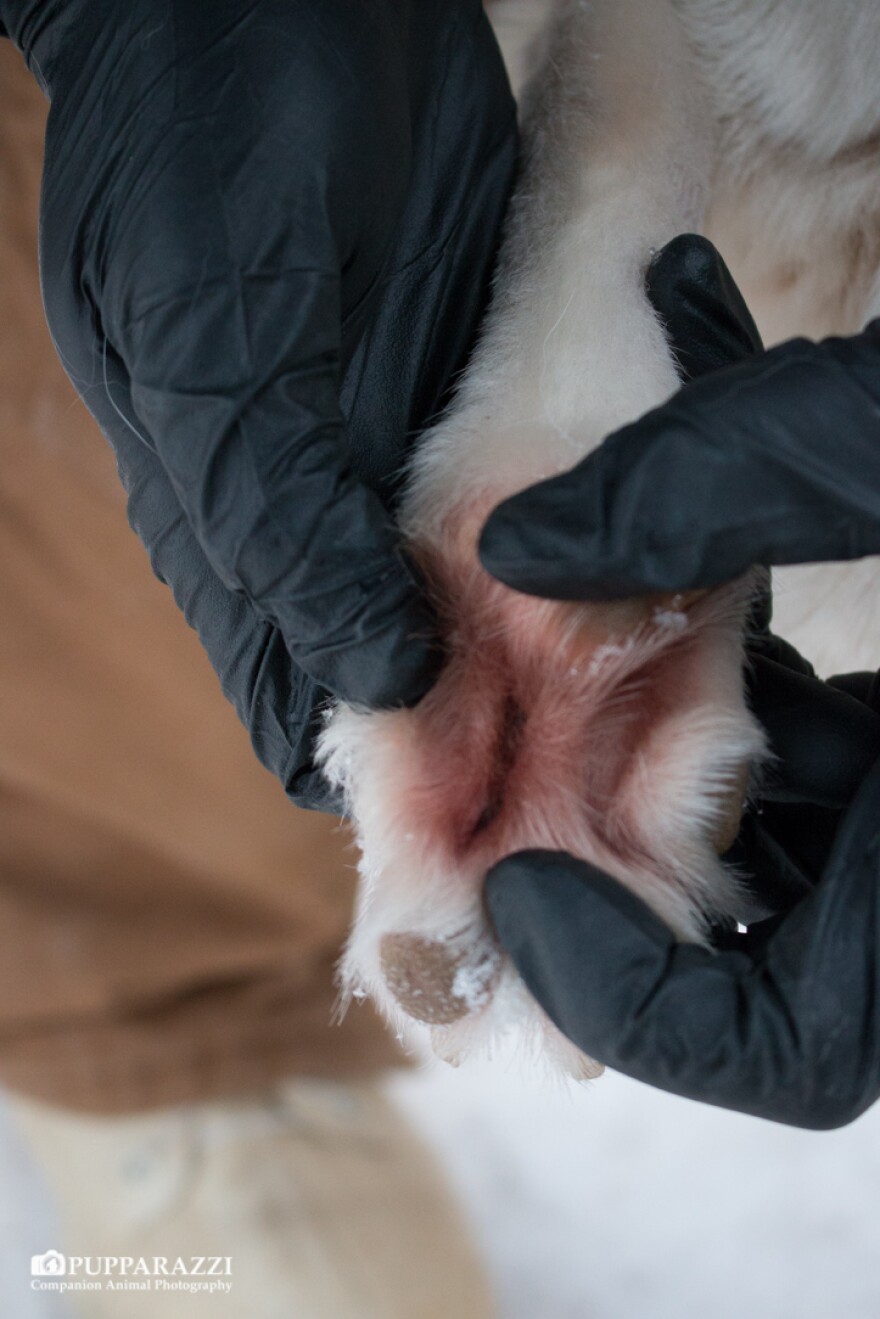
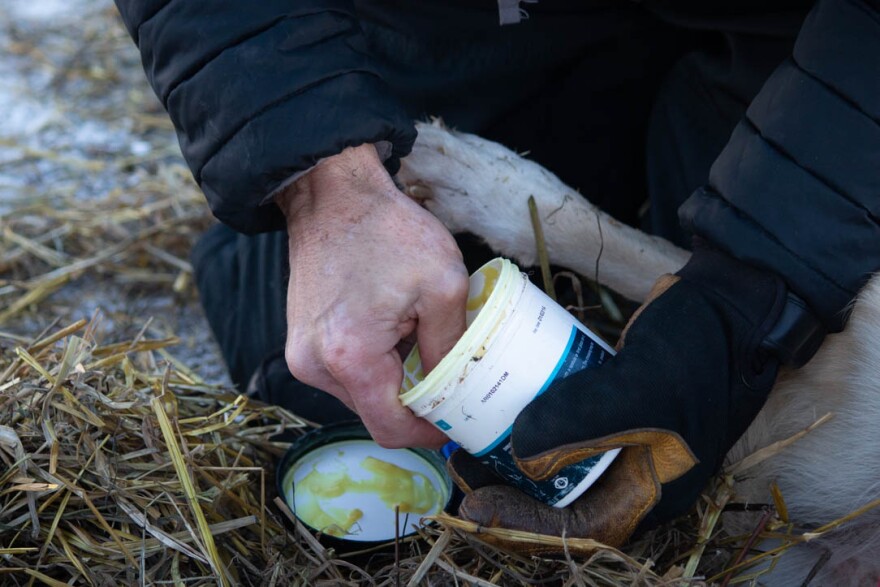

Vets will check each dog’s joints, manipulating them to evaluate range of motion and looking for any signs of pain or orthopedic issues.

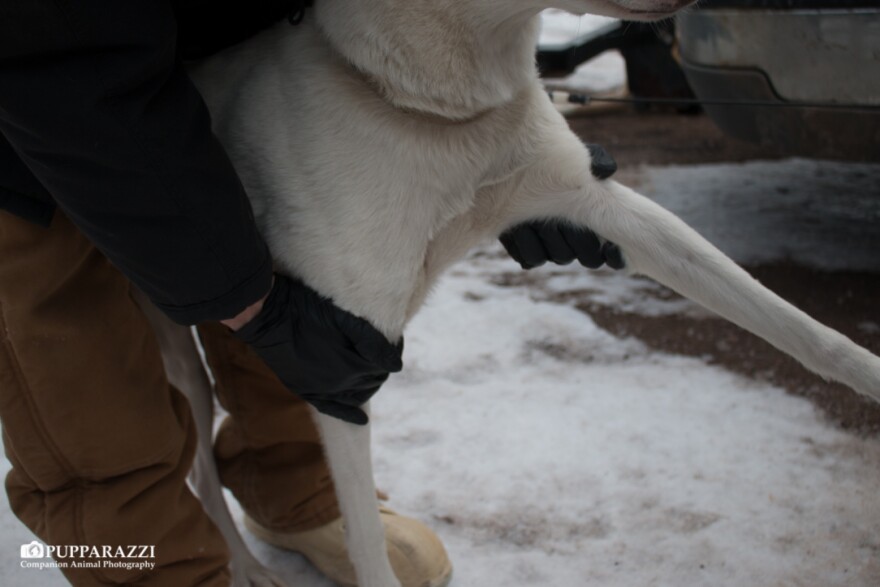
It’s also an opportunity for mushers to ask questions about anything they’re concerned with, and just like with house dogs, they know each of their dogs intimately and are attuned to any signs an animal isn’t feeling 100%. It’s also the time when a musher and the medical team might decide to swap dogs for the team and the two subs. For the full marathon, vets will check 14 dogs for the 12-dog teams. For the 120, 10 dogs will be okayed for the eight-dog teams.
If you figure 12 marathon teams, 20 120 teams, 20 rec race teams and five120 junior teams, times the maximum dogs to be checked for each race that comes to between 470 and 586 vet checks on Saturday. Is it any wonder they have to mark the dogs who’ve already been checked?
This is where the “who’s been coloring on the sled dogs and why?” begins. After a dalliance back in the ‘90s with the kind of “spray paint” groomers use to dye poodles rainbow hues, vets and mushers settled on greasepaint markers, the kind that are used on cattle. Dogs not racing get a swipe of orange down their noses. Dogs with orange stripes not on their faces are recreational race entrants.
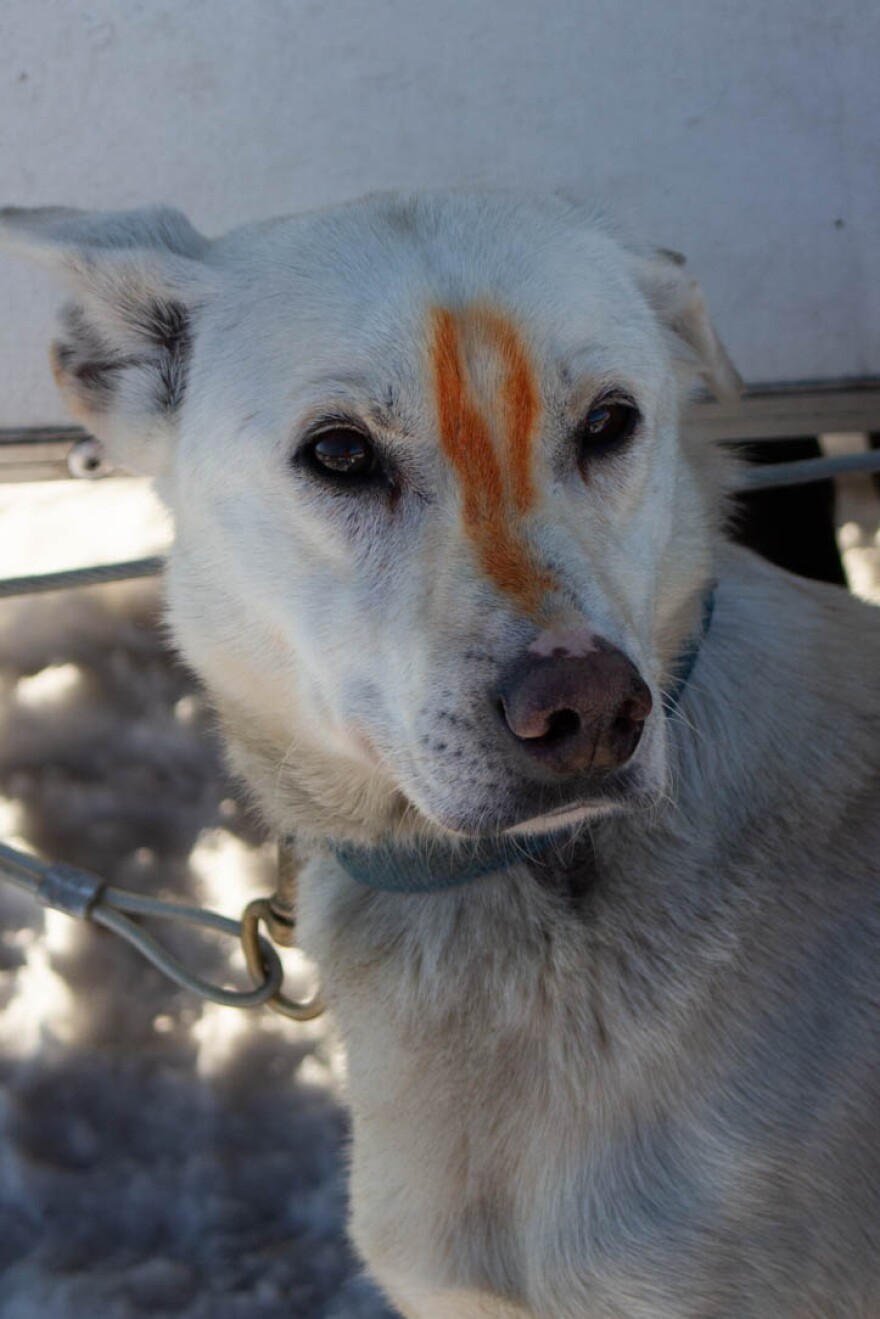
Dogs with green on them are racing in the 120, or half-marathon, and dogs with a red/pink/magenta streak are racing in the full marathon.
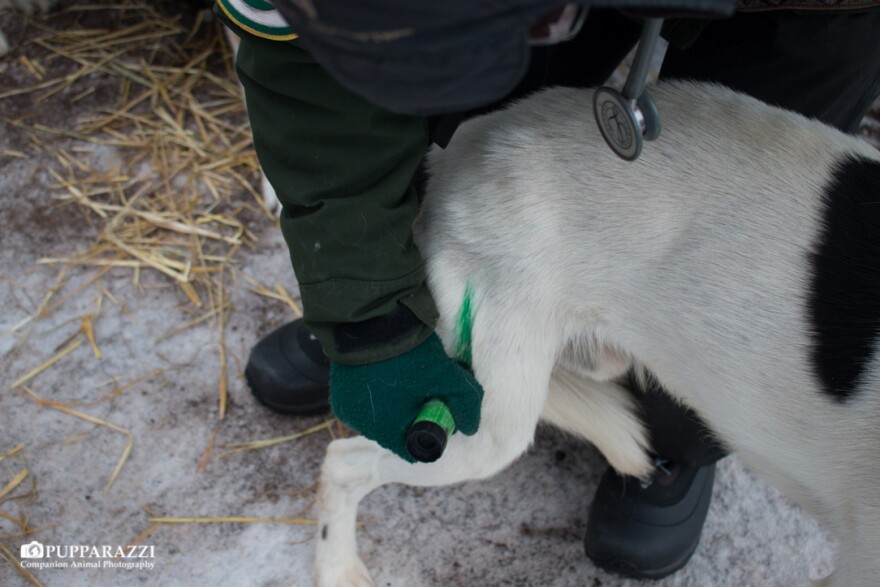
So what are the vets looking for as they check the dogs throughout the race? Dr. Greg Phillips says it depends on the trail. A hard trail could result in swollen wrists from the pounding (yes, dogs have wrists and they’re right where you think they’d be). The best course of treatment is, ironically, ice and massage. Mushers or handlers will massage away from the dog’s wrist and toward the elbow to try to lessen the inflammation and fluid build-up, and they may even support the joint with the kind of neoprene wraps our vets and human doctors do.
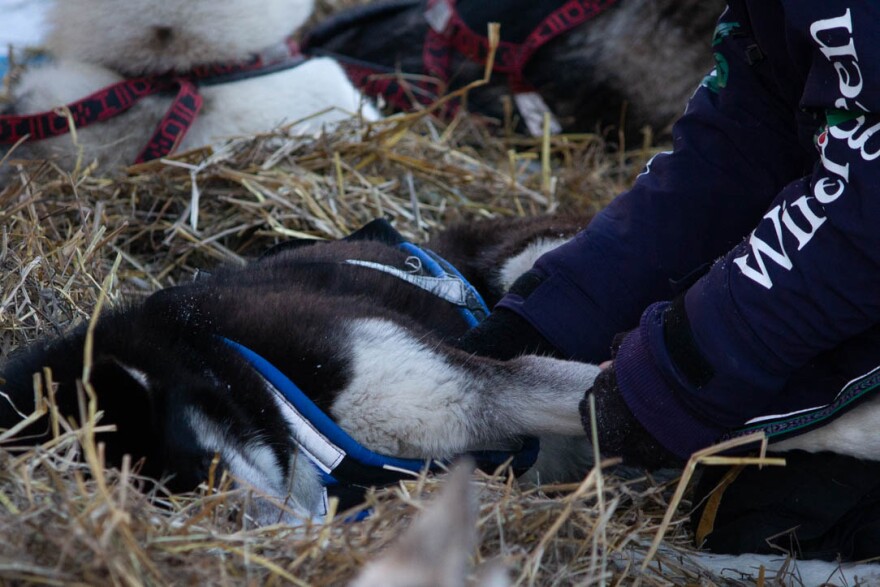
A soft trail, maybe with snow drifts the dogs have to punch through, could cause sore shoulders from the jarring. Once again, the remedy is ice, rest and massage to keep fluid from accumulating in the joint.
If it’s snowing, the dogs may have to work a little harder to keep the sled moving, which is why good mushers are always on the lookout for times they can jump off the sled, run alongside and help push. That’s where injuries to hind legs can happen or stiffness and pain in hip joints.

In addition to the vet check the day before the race, teams are looked over by vets at every checkpoint (there are two checkpoints for the 120 and six for the full marathon). The dogs get a complete exam at the halfway point and another at the race finish. That’s three complete vet visits in about three days and if that’s not enough, mushers can request a vet check at any time.
How can mushers, handlers and race enthusiasts be reassured the dogs running the Beargrease are ok? Greg Phillips says it’s really hard to get someone (even/especially a dog?) to do something they don’t want to do. But if they have a passion (like racing) it’s almost impossible to stop them. Watch the race start, he says. The dogs are leaping and barking and howling; primed by their hardwiring and their training to race.
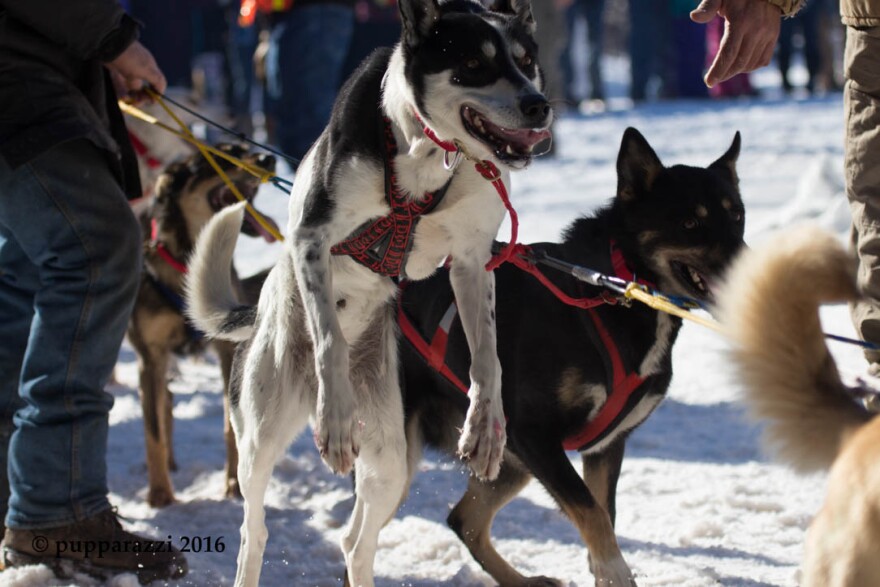


Watching how they come in to the checkpoints and the finish line also tells the story. Chances are you’ll see relaxed faces and waving tails. And it’s no accident that the rules clearly specify how many dogs need to come across the finish “standing in harness” (which means dogs riding in the basket don’t count). Immediately after the musher crosses the finish line, they and the handlers are getting the dogs out of harness and in front of a good meal. Teams might lie down for a bit but after about 20 minutes or so, many dogs are raring to go again.
Finally, Phillips says it’s just a dumb idea to include dogs on a racing team who don’t want to run. After all, he grins, it only takes three things that work to make a musher successful: a truck, the dogs, and a spouse!












